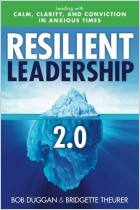
Leading Self-Directed Work Teams
A Guide to Developing New Team Leadership Skills
Read or listen offline
Recommendation
Kimball Fisher provides a revised, updated look at the techniques for successfully leading self-directed work teams (SDWTs). He draws on basic principles described in his earlier book of the same name. SDWTs are effective and growing in popularity. Fisher focuses on how leaders must adapt to make them work. He emphasizes the need to truly empower and support workers. He underscores the importance of making the team adaptable to the work itself, rather than clinging to a particular structure. Fisher combines principles with examples and how-to tips that you can apply in your own organization. He provides good summaries of each chapter’s highlights. getAbstract recommends this well-organized, clearly written book. While some of its contents are similar to recent books on creating teams, empowering employees and using a better management style, it is an excellent recap and a good guide for anyone new to team-building methods.
Take-Aways
About the Author
Kimball Fisher, co-founder of the Fisher Group, has worked with many companies implementing high-performance management practices across North America, Western Europe, Asia, and Africa. These include Amoco, Apple Computers, Chevron, Corning, Hewlett Packard, Monsanto, Motorola, NBC, Shell, and Weyerhauser. He speaks at conferences on teams, leadership, and organization design. He wrote the first edition of this book six years ago.
















Comment on this summary or Comenzar discusión